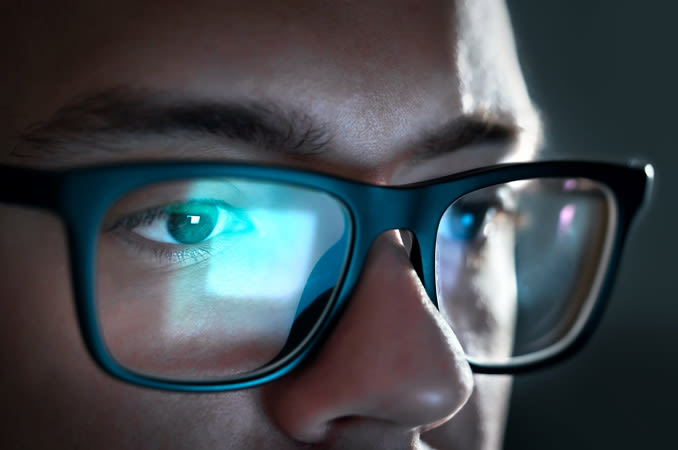Tech
Blue Light Glasses: Benefits and Usage Explained

Blue light glasses have emerged as a popular solution for those who spend extended periods looking at screens. They are designed to reduce the amount of blue light that reaches the eyes, potentially preventing discomfort and digital eye strain. These glasses can filter out blue light rays, which are linked to disrupted sleep patterns and eye strain, especially in the digital age where screen time is at an all-time high.
The benefits of wearing blue light glasses extend to various activities, including working on computers, gaming, and reading. Brands like Benicci and Peepers offer stylish and functional options, making it easy to integrate eye protection into everyday life without compromising on fashion. For those prone to headaches or visual discomfort from excessive screen time, blue light glasses can provide much-needed relief.
Options are plentiful, from affordable versions on Amazon to high-end alternatives from brands like Ray-Ban. With features such as anti-glare coatings and proprietary lens technologies, users can find glasses tailored to their specific needs. Whether considering BlueReflect™ or KODAK UVBlue lenses, selecting the right pair can enhance visual comfort and reduce the adverse effects of blue light exposure.
Understanding Blue Light Glasses
Blue light glasses are crafted to mitigate the potential harmful effects of blue light, which emanates from digital screens. These glasses filter specific wavelengths, aiming to reduce eye strain and improve sleep quality.
What Is Blue Light?
Blue light is part of the visible light spectrum with a short wavelength, giving it high energy. It is naturally emitted by the sun but also by electronic devices such as computers, phones, and tablets. This artificial blue light exposure is linked to digital eye strain and disrupted sleep patterns.
How Do Blue Light Glasses Work?
Blue light glasses feature specialised lenses designed to block or filter out blue light. These lenses often have a slight yellow or amber tint to counterbalance the blue light. By filtering the harmful blue light wavelengths, the glasses aim to reduce the amount that reaches the retina, which can help in reducing eye strain and potential retina damage.
The Benefits of Wearing Blue Light Glasses
Wearing blue light glasses may provide several benefits. They can reduce symptoms of digital eye strain, including dry eyes, headaches, and blurred vision. Some users report improved sleep patterns when using these glasses in the evening, as blue light can interfere with the production of melatonin, a hormone that regulates sleep.
Choosing the Right Blue Light Glasses
When choosing blue light glasses, consider the type and extent of your screen use. Look for lenses with a good blue light blocking percentage, typically around 30%-50% for general use. Comfort and fit are also essential – consider frames that suit your face shape and are light enough for prolonged wear.
Kenneth is a proud native of sydney, born and raised there. However, he pursued his education abroad and studied in Australia. Kenneth has worked as a journalist for almost a decade, making valuable contributions to prominent publications such as Yahoo News and The Verge. Currently, he serves as a journalist for The Hear Up, where he focuses on covering climate and science news. You can reach Kenneth at [email protected].










